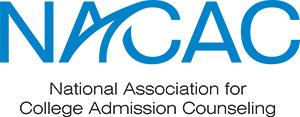One of the most common questions students grapple with is: “How many colleges should I apply to?” While there is no magic number that fits everyone, this blog will offer strategic insight into how many schools you should apply to and what to consider when building your college list.
Table of Contents:
- The Myth of “More is Always Better” and Finding the Sweet Spot
- How Many College Applications is Too Few?
- How Many Colleges Should You Apply To?
- What Variety of Schools Should You Be Applying To? How to Make a List of Colleges to Apply To
- Factors to Consider When Building Your College List
- Common Mistakes to Avoid
- Final Thoughts
Key Takeaways
- Don’t just apply to as many colleges as you can; find your sweet spot. We recommend applying to 6-12 colleges for a more balanced approach and to maximize your chances of acceptance.
- Your college list should be a mix of different institutions, including safety, target, and reach schools. A good range is to include 2-3 safety schools, 3-5 target, and 1-3 reach.
- Don’t make easily avoidable mistakes such as procrastination, not considering college application deadlines, or skipping college research altogether. Making these common mistakes can lead to generic and/or incomplete applications and hinder your acceptance chances.
The Myth of "More is Always Better" and Finding the Sweet Spot
It might seem logical that applying to more schools increases your chances of getting in, right? Wrong. Quantity doesn’t always equal quality, and there are many reasons students should put limitations on the number of colleges they apply to. Submitting applications to too many colleges can result in:
- Increased application costs. Application fees (often $40-$100 per school) can quickly add up. These costs can become a significant burden to students, especially if you’re still unsure about your chances of acceptance.
- Burnout and stress build up. Each application requires a lot of attention, effort, and personalization to ensure it’s as best as it can be. Spreading yourself too thin can result in rushed, less-than-stellar, or even incomplete applications. With college application deadlines falling close together, the mental toll of managing multiple applications in a short time frame can be tremendous.
- Decision-making overload is very real. Applying and getting accepted to too many schools can make the final decision-making process more challenging and confusing for students. It’s better to focus your energy on a shorter, curated list of colleges that genuinely excite you.
How Many College Applications is Too Few?
On the flip side, applying to too few colleges can also be risky. If you only apply to one or two “dream colleges” that are highly competitive, you run the risk of not getting accepted anywhere. Ultimately, it can decrease your options as an applicant. Students should aim to apply to a minimum of 5-6 colleges to ensure they have diverse opportunities and options. The minimum allows you to have a mix of different types of colleges (which we’ll discuss next) and provides a safety net for students.
How Many Colleges Should You Apply To?
We’ve mentioned the recommended minimum when applying to college, but what’s the sweet spot? Ideally, students should apply to 6-12 colleges in one application cycle. This range allows you to cast a wide enough net without becoming overwhelmed. It also gives you options in case you receive deferrals or redirections from colleges. Some experts may recommend fewer or even slightly more, depending on the competitiveness of the desired major, the list of colleges, or the countries being applied to.
However, the most important thing as an applicant is to consider your bandwidth. If you’re a student who has a ton of extracurricular commitments during senior year and won’t have time to apply to 15+ colleges, it may be best to reduce the size of your college list. Take some time to reflect on what’s feasible to you.
FAQ: Is there an official limit to how many colleges you can apply to?
College application platforms such as the Common App will generally limit students to 20 colleges. That said, if a student is applying through multiple platforms, there is no limit to how many schools they can apply to.
What Variety of Schools Should You Be Applying To? How to Make a List of Colleges to Apply To
Building a balanced list is crucial to being successful in the college application process. Even the most qualified students can get rejected from their dream colleges or highly selectives. For that reason, it’s important that students spend time curating a balanced list of schools with a mix of institutions based on their selectivity.
In this next section, we’ll dive into the difference between safety, target, and reach schools.
What are Safety Schools?
Safety schools are institutions where the acceptance rate is highly likely. Think of these as a reliable fallback. Ideally, students should aim to have 2-3 safety schools on their college list. Examples of safety schools may change from student to student, so a good way to identify if a school is a safety for you is by asking these questions:
- What is the general acceptance rate of the college?
- Do I exceed the minimum requirements listed on the college website?
Once you get a better sense of where you sit within the wider pool of applicants, you can consider if an institution is a safety school to you.
What are Target Schools?
These are colleges and universities where your profile aligns with the average criteria of the students accepted. You may meet, slightly exceed, or even be slightly below their typical admissions requirements. Look at these colleges as schools where you may be challenged slightly, but still successful. Aim for 3-5 of these colleges.
What are Reach Schools?
Reach (or even far reach) schools are institutions where:
- The college admissions process is highly selective (15% or less)
- The applicant pool is filled with extremely qualified applicants
- Or your profile meets or is below the minimum requirements listed on the college website
Examples of reach schools include the Ivy League, Stanford, UCLA, and MIT. While these colleges are a stretch, it’s still good to include a few of them on your college list if they genuinely excite you and align with your academic interests. Reach schools should make up the smallest portion of your college list, roughly around 1-3 schools.
FAQ: Can I change my college list after I've started my applications?
Students may go through multiple variations of a college list from when they begin their college research process until it’s time to apply. However, once you submit your application, there is no going back.
Factors to Consider When Building Your College List
The ideal number of colleges you apply to will depend on a myriad of factors, including:
Academic Profile & Aspirations
Be realistic about your academic performance, where you sit within the wider applicant pool, and what you can handle in college. Through this self-reflection, you’ll be able to craft a college list that meets your academic needs and challenges you in a healthy way.
Personal Preferences
What are you looking for, and how will college help you achieve this goal? Consider things such as:
- Location
- Majors/programs
- Campus culture
- Size
- Affiliations (political, social, and religious)
- Financial considerations
- Quality of academics
College Costs
We’ve spoken briefly about application fees, but more importantly, if accepted to a college, can you afford to attend it? Research college costs, FAFSA, and financial aid options for each institution you’re interested in.
Program Requirements
Each application requires a lot of attention from students, and some specialized programs ask for additional information that students must submit alongside their application. Requirements such as filmed videos, portfolios, and interviews can be asked of students depending on their selected major. If a student is applying to dozens of colleges, the number quickly multiplies and can become overwhelming. Be sure to check general admissions requirements as well as program-specific requirements.
Common Mistakes to Avoid
Not Considering College Application Deadlines
Applying Early Action, Early Decision, Regular Decision (or a combination of them), can have a big impact on a student’s college list. For some students, applying early can be a great way to show demonstrated interest and improve their candidacy, but it can also raise challenges for students who may rely on financial aid. This is especially true for students looking to apply Early Decision (a binding commitment) or students applying before FAFSA proceedings, who may not be able to compare financial aid packages across institutions.
Submitting “Copy-Paste” Applications
We love working smarter, not harder, but sometimes students go from recycling content to simply copy-pasting. Admissions officers can spot generic essays or worse, read the name of the wrong institution because a student failed to proofread their work before submitting.
While it’s tempting to reuse content and save time, if not done correctly, it can lead to college applications that fail to communicate your interests and effort.
Rushing Supplemental Essays
Many students focus on the Personal Statement, and though it is an important part of the application process, it’s not the only piece that matters. Supplemental essays gather critical information that colleges need to know in order to decide if you’re the right fit for their college. Be sure to give the same care to supplemental essays as you do the main college essay.
Focusing Solely on Prestige
If you haven’t read our hot takes on college rankings, it may be best to do so before reading on. Applying to too many “name-brand” or prestigious colleges can take a serious toll on students, especially when these colleges are selective for even the most qualified applicants. Likewise, no two students or colleges are alike, and some students may find that these colleges, although highly ranked, aren’t the best fit for them.
Final Thoughts
Ultimately, finding the “right” number of colleges to apply to is a personal decision. Focus on quality over quantity, establish a balance between safety, target, and reach schools, and take the time to research colleges and programs. For more information about the college admissions process, feel free to register for one (or more) of our free weekly webinars. To learn more about our personalized 1:1 counseling, schedule a free consultation with us today.
About Us: With more than twenty-five years of experience, Collegewise counselors and tutors are at the forefront of the ever-evolving admissions landscape. Our work has always centered on you: the family. And just like we’ve always done, we look for ways for your student to be their best self - whether in the classroom, the applications, or in the right-fit college environment. Our range of counseling, test prep, academic tutoring, and essay management, all with the support of our proprietary platform, lead to 4x higher than average admissions rates.



/Common%20App%20Guide%20CTA.png?width=665&height=222&name=Common%20App%20Guide%20CTA.png)
/college%20essay%20guide%20cta.png?width=600&height=200&name=college%20essay%20guide%20cta.png)
/Webinar%20blog%20CTA.png?width=600&height=200&name=Webinar%20blog%20CTA.png)


